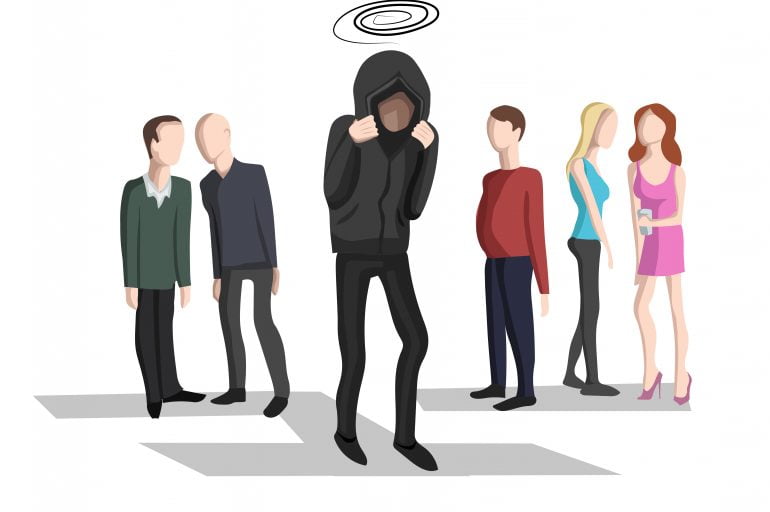
Many of our clients come in with some type of social anxiety issue. Social anxiety occurs when someone has a stress or anxiety response that is triggered by being around other people or social situations. Often it is not debilitating, but it is something that influences their quality of life. Social anxiety does not have to happen around all people all the time. Sometimes it only occurs with specific people, or in specific situations. Regardless of the intensity or triggers, social anxiety is something anyone can overcome. Below are three areas for social anxiety treatment.
All anxiety thoughts are going to have a common theme of worst case scenario. Social anxiety thoughts are no different. The worst case scenario of social anxiety is “They are going to judge me in a negative way.” Exploring what this “negative way” is then becomes the focus for challenging the social anxiety thoughts. Typical “negative way” thoughts include being perceived as stupid, lazy, different, or weak.
A common example clients discuss is blushing and perspiring when giving a presentation to a large group at work. The following is a typical conversation:
Client: If they see me blush they’ll know I’m anxious.
Therapist: Why does that bother you?
Client: If they know I’m anxious, they won’t believe me.
Therapist: How come?
Client: If I’m anxious it means I don’t know what I’m talking about and they won’t value me.
Therapist: Okay, let’s break that down and see if that’s true, or how often it’s true…
In the hypothetical conversation above, the client says that if they appear anxious it means other people will not value them. This belief is a cognitive distortion that will then be the focus of treatment to help with social anxiety symptoms.

Working with the emotion directly is very helpful. In the case of social anxiety, the primary emotion is anxiety, but it can include feelings of guilt, anger, disappointment, or hopelessness. As with any unpleasant emotion, the natural tendency is to try and find a way to not feel the emotion. (Think procrastination, denial, “ghosting” others, etc…) Which makes sense, because who wants to feel anxiety? Especially when it’s in the presence of others! Unfortunately, this tendency to not feel / avoid social anxiety feelings only serves to reinforce ineffective coping skills, and prevents clients from developing more advanced skills that can help overcome this type of anxiety.
Typical treatments from Cognitive Behavioral Therapy and Dialectical Behavior Therapy use techniques that teach clients how to identify, and work with social anxiety feelings directly.
The word that best describes the behavior patterns of an anxious person is avoidance. This is also true with social anxiety. Understandable, because nobody really wants to place themselves in an anxious situation without good reason. But similar to emotion skills, avoiding social anxiety situations prevents clients from developing more effective coping skills.
Typically, social anxiety treatment focuses on developing effective skills around thoughts and emotions (as well as relaxation training) before developing a plan that emphasizes behavior. While each client’s anxiety presents in different ways, the theme is to find social situations that are mildly triggering, and work up to more challenging social triggers.
As with any type of anxiety, it is important to remember that while it might feel out of control and scary, there are treatments available that are highly effective. Working with the anxiety thoughts, emotions, and behaviors is one such way.